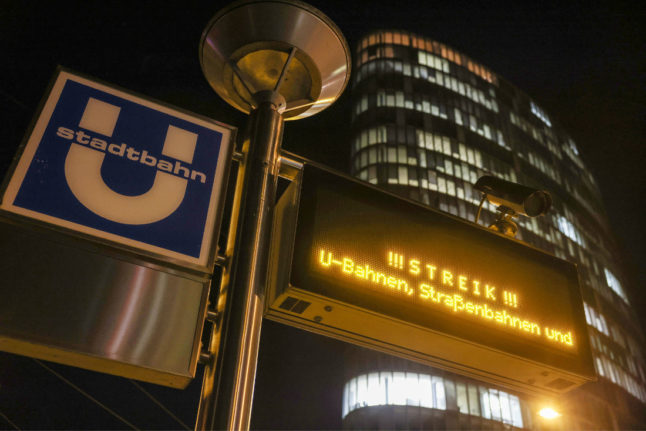“Now that wage negotiations have taken place in all federal states and have remained without result, the time has come to put more pressure on the employers,” said Christine Behle, deputy federal chairwoman of Verdi, in Berlin on Monday.
More than 90,000 workers at over 132 local companies operating buses, trams and underground services are expected to join the walkout.
This means that passengers will once again face considerable restrictions this Friday, especially in rush-hour traffic.
Behle said the union was seeking a 35-hour work week with no losses in wages, in a bid to make jobs more attractive to workers.
Many operators are reporting up to 20 to 30 percent unfilled posts, with the worker shortages contributing to a vicious cycle of overworked employees who are then falling ill, exacerbating the situation.
“In all areas, buses and trains are being cancelled because there are not enough employees,” said Behle. “Something must be done urgently to bring about relief.”
It was only on Monday at 2 am that the German Train Drivers’ Union (GDL) ended its strike at Deutsche Bahn, which lasted several days, ahead of schedule. A ‘peace deal’ now applies up to and including March 3th.
READ ALSO: Germany’s six-day strike ends early: What happens next?
This means that only local public transport represented by Verdi – or the U-Bahn, busses, trams and in some cities water taxis – will be striking on Friday, whereas long-distance and regional transport should run as usual.
With the exception of Bavaria, the union is negotiating in parallel with the municipal employers’ associations in all states on new collective agreements for public transport employees.
No solution was reached in any region during the first round of negotiations last week.
Climate group Fridays for Future backed the industrial action.
Spokeswoman Darya Sotoodeh said: “We all need reliable local public transport to get us safely and cheaply to work, to clubs or home.”
Blasting the government for spending cuts that she said was translating to shorter breaks for workers, she stressed: “That must now change.”



 Please whitelist us to continue reading.
Please whitelist us to continue reading.
Member comments